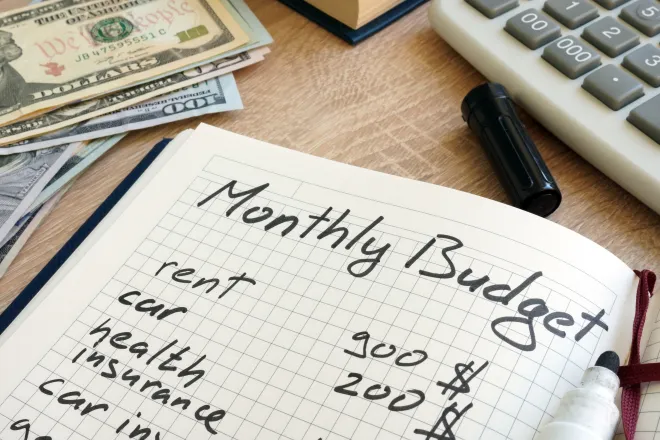
Trump isn’t sending troops to cities with highest crime rates, data shows
President Donald Trump has argued that he needs to deploy National Guard troops across state lines to protect federal personnel and property or to support overwhelmed local law enforcement in cities he claims are “overrun” by crime.
But a Stateline analysis of U.S. Census Bureau and federal crime data shows that Trump’s deployments and proposals have not focused on the nation’s most violent cities. Of the 10 cities population 250,000 or more with the highest violent crime rates, Trump has sent National Guard troops to just one: Memphis, Tennessee.
He has proposed action in just three other top-10 cities: Oakland, California; Baltimore; and St. Louis. All, along with Memphis, are Democratic-led cities.

Donald Trump at the Pentagon 2017 - Public Domain
Several other cities with high violent crime rates — including Milwaukee; Albuquerque, New Mexico; and Minneapolis — also are led by Democrats but have not been targeted. Two other Democratic-led cities with high violent crime rates, Cleveland and Kansas City, Missouri, are in states with Republican governors and likewise haven’t been targeted.
Instead, the administration has directed more attention toward larger, Democratic-run cities in Democratic-led states such as Chicago, Los Angeles and Portland, Oregon, along with Washington, D.C., where violent crime rates are lower than in many other major cities.
In recent months, Trump has pledged strong federal intervention in several cities if, he claims, local officials fail to restore order.
Critics, including Democratic governors and mayors, have challenged his rationale in court, arguing that deployments exceed the president’s authority and undermine local control.
Federal courts have issued orders halting troop deployments in several cities while legal challenges proceed. Most recently, deployments were blocked in Chicago and Portland. The Trump administration is appealing those rulings.
Trump also has suggested deploying troops to New York City and San Francisco.
Stateline’s data analysis shows violent crime has fallen sharply across the United States, including significant drops in some cities that Trump is threatening with military action.
Some crime experts question whether a heightened law enforcement or military presence in major cities will have a lasting impact on crime.
“In the long term, this can’t really be good for public safety,” said Nancy La Vigne, a criminal justice researcher and dean of the School of Criminal Justice at Rutgers University. La Vigne added that crime may decline in the cities where the Guard is deployed, but that it will likely be an “artificial suppression of crime” because potential victims may avoid downtown areas — an effect that could fade over time.
Violent crime is down
Some Republican governors have welcomed federal support. Tennessee Republican Governor Bill Lee endorsed the use of Guard troops in Memphis as part of a new citywide anti-crime task force.
Louisiana Republican Governor Jeff Landry has requested federal funding to activate up to 1,000 Guard members statewide, citing “elevated violent crime rates” in Baton Rouge, New Orleans and Shreveport. Landry also pointed to critical staffing shortages in local law enforcement.
According to local police data through Sept. 6 of this year, however, violent crime in New Orleans is not elevated. It has fallen 16 percent, with homicides down 20 percent and property crimes also down 20 percent compared with the same period in 2024.
Likewise in Baton Rouge, both the overall violent crime rate and the homicide rate declined between 2023 and 2024, falling below 2019 levels, according to a Stateline analysis.

© Daniel Tamas Mehes - iStock-1992275198
In Shreveport, the overall violent crime rate increased between 2023 and 2024, while the homicide rate fell. Both rates remain higher than in 2019.
The cities with populations of 250,000 or more with the highest violent crime rates were, in order: Memphis, Oakland, Detroit, Baltimore, Cleveland, Kansas City, Milwaukee, St. Louis, Albuquerque and Minneapolis, according to Stateline’s analysis of FBI data.
Available national crime data shows that both violent and property crime continue to decline nationwide. These broad national trends, however, don’t mean every community is experiencing less crime. Some cities and neighborhoods are still seeing higher rates of certain offenses.
According to the Real-Time Crime Index — a free tool that collects crime data from more than 500 law enforcement agencies — violent crime nationwide was 10.7 percent lower between January and July 2025 than during the same period the previous year, with homicides down 20 percent and property crime down 12.4 percent.
The nonpartisan think tank Council on Criminal Justice’s most recent crime trends report shows declines in homicides, gun assaults and carjackings across 42 major cities in the first half of 2025 compared with the same period in 2024. The report shows increases in homicide across five cities.
Although the FBI’s findings are a year behind, they align with those numbers. The FBI’s 2024 report, released earlier this year, showed that violent crime fell 4.5 percent and property crime dropped 8.1 percent nationally compared with the previous year. Homicides alone declined by nearly 15 percent.
These improvements mark a continued reversal of the pandemic-era surge in violence, when homicides rose nearly 30 percent in 2020 — one of the largest single-year increases in U.S. history.
But the pace and direction of those declines vary widely from city to city, and public perception of crime often diverges from what the data shows.
City-by-city details
Nationally, violent and property crime have fallen sharply since peaking in the 1990s — a trend mirrored in most cities, including the five where Trump has deployed or sought to deploy the National Guard.
There may be variations between national figures and local police data because of differences in data collection methods and how crimes are defined.
In Washington, D.C., where the number of reported homicides spiked in 2023, homicides declined by 32 percent in 2024. The homicide rate fell from 39 per 100,000 residents in 2023, to 26 in 2024, according to a Stateline analysis of FBI crime data.
Local police data shows that, as of Oct. 15, 2025, homicides are down 25 percent from last year, along with declines in every other major crime category, including property crime.
Los Angeles recorded similar declines between 2023 and 2024 across nearly all crime types, except for arson, which rose from 179 reported incidents to 410, according to a Stateline analysis. Still, overall violent and property crime fell during that period. The city’s homicide rate dropped slightly from 8 per 100,000 residents in 2023 to 7 in 2024.
Los Angeles ranks No. 32 nationally in violent crime among cities with populations over 250,000. FBI data shows a rate of 728 incidents per 100,000 residents, while a Stateline analysis using U.S. Census Bureau population estimates from May shows a slightly lower rate of 715 incidents per 100,000 residents.
As of Oct. 4, 2025, data maintained by the Los Angeles Police Department shows violent crime down 16 percent and property crime down about 18 percent compared with the same period last year.
Memphis also reported decreases in most major crime categories between 2023 and 2024, though aggravated assaults increased slightly, according to a Stateline analysis. The city’s homicide rate fell from 57 to 40 per 100,000 residents during that same period.
In 2024, Memphis recorded the highest violent crime rate among major U.S. cities with populations over 250,000 — 2,501 incidents per 100,000 residents, according to FBI data. A Stateline analysis using U.S. Census Bureau population estimates from May show a slightly higher violent crime rate of 2,515 reported incidents per 100,000 residents.
Local police data shows homicides during the first eight months of 2025 are at a six-year low compared with the same period in previous years, and overall crime is at a 25-year low.
Chicago, by contrast, recorded increases in rape, aggravated assault, burglary and larceny-theft between 2023 and 2024, according to a Stateline analysis.
While the overall violent crime rate was lower in 2024 than in 2023, the property crime rate rose slightly. The homicide rate declined modestly from 18 to 17 per 100,000 residents. As of Oct. 12, 2025, overall reported crime is down 13 percent from the same period last year, and murders are down 28 percent, according to local police data.
In Portland, most major crime categories fell between 2023 and 2024, though larceny-theft and aggravated assault rose, according to a Stateline analysis. Overall violent and property crime rates were lower in 2024 than in 2023, and the homicide rate declined slightly from about 12 to 11 per 100,000 residents.
Between January and August 2025, compared with the same period in 2024, total crime has remained largely unchanged, according to the Portland Police Bureau’s crime statistics dashboard. However, reported violent crimes are up 3 percent, property crime is down 4 percent and “society” crimes such as prostitution and drug offenses have increased significantly.
Public perception of crime
Despite nationwide declines in violent and property crime, most Americans believe crime is getting worse.
A Gallup poll conducted in October 2024 found that 64 percent of adults thought crime had increased nationally compared with the previous year, while 49 percent said there was more crime in their local area. A more recent poll from March found that 75 percent of adults worry about crime either a fair amount or a great deal.
Criminologists and researchers point to several factors behind the gap between public perception and actual crime trends. Political rhetoric and media coverage often emphasize violent incidents, and misleading interpretations of crime data can reinforce fear.
“We live in a society now where people want information and don’t want to take the time to stop and think, and to also consult alternative viewpoints,” said Alex Piquero, a criminology professor at the University of Miami and former director of the federal Bureau of Justice Statistics.
Crime statistics are notoriously difficult to track and understand, in part because much of the data lags behind real-time events. Different sources can also show different trends, depending on how the information is collected.
For example, FBI data relies on voluntary reports from police departments, which may not capture all crimes, while the Bureau of Justice Statistics’ victimization survey excludes homicide and is based on respondents’ experiences in the six months prior to the survey rather than the year it is released. These differences make it challenging for the public to get a clear, up-to-date picture of crime in their communities.
Public perception is further shaped by visible signs of disorder, such as graffiti, abandoned buildings or homeless encampments, according to experts.
People also tend to remember personal anecdotes or news stories that resonate emotionally, rather than abstract statistics. Experts say that this dynamic can be exploited in political messaging, creating a sense of personal risk even when overall crime is declining.
“Crime is kind of one of those things that doesn’t go away in the news cycle because it is relevant to people on a day in and day out basis,” Piquero told Stateline.
Law enforcement presence
Ramped-up police and National Guard patrols in cities nationwide have sparked debate over whether such deployments are effective at curbing crime or mostly serve as a show of force.
Research suggests that police and military presence affect crime in very different ways. Targeted policing in high-crime “hot spots” reduces crime in those areas, according to experts.
“Police are one part of an overall crime prevention strategy, and they are very effective at disrupting what we call ‘hot spots,’” Piquero said.
The National Guard and other military forces, on the other hand, have historically played a very limited role in crime prevention, according to experts. National Guard troops are typically deployed during civil unrest or natural disasters, rather than as a routine crime-fighting tool.
A 2023 research paper led by Brown University examining Cali, Colombia, suggests that military policing rarely outperforms traditional police in reducing crime. In many cases, crime declines are short lived, and rates often go up once military forces leave.
Military deployments in cities are unlikely to produce the sustained reductions in crime that targeted policing can achieve, in part because the National Guard does not receive the same training as local police officers on when and how to use force or implement crime prevention strategies.
Some experts say that these deployments may be more effective when requested and guided by local officials who can define the need, duration and scope of their support.
Experts also caution that the presence of military personnel can heighten tensions or erode community trust, potentially undermining the relationships local police have built to effectively address crime. Such deployments may also have economic consequences if residents or tourists avoid city centers out of fear.
















